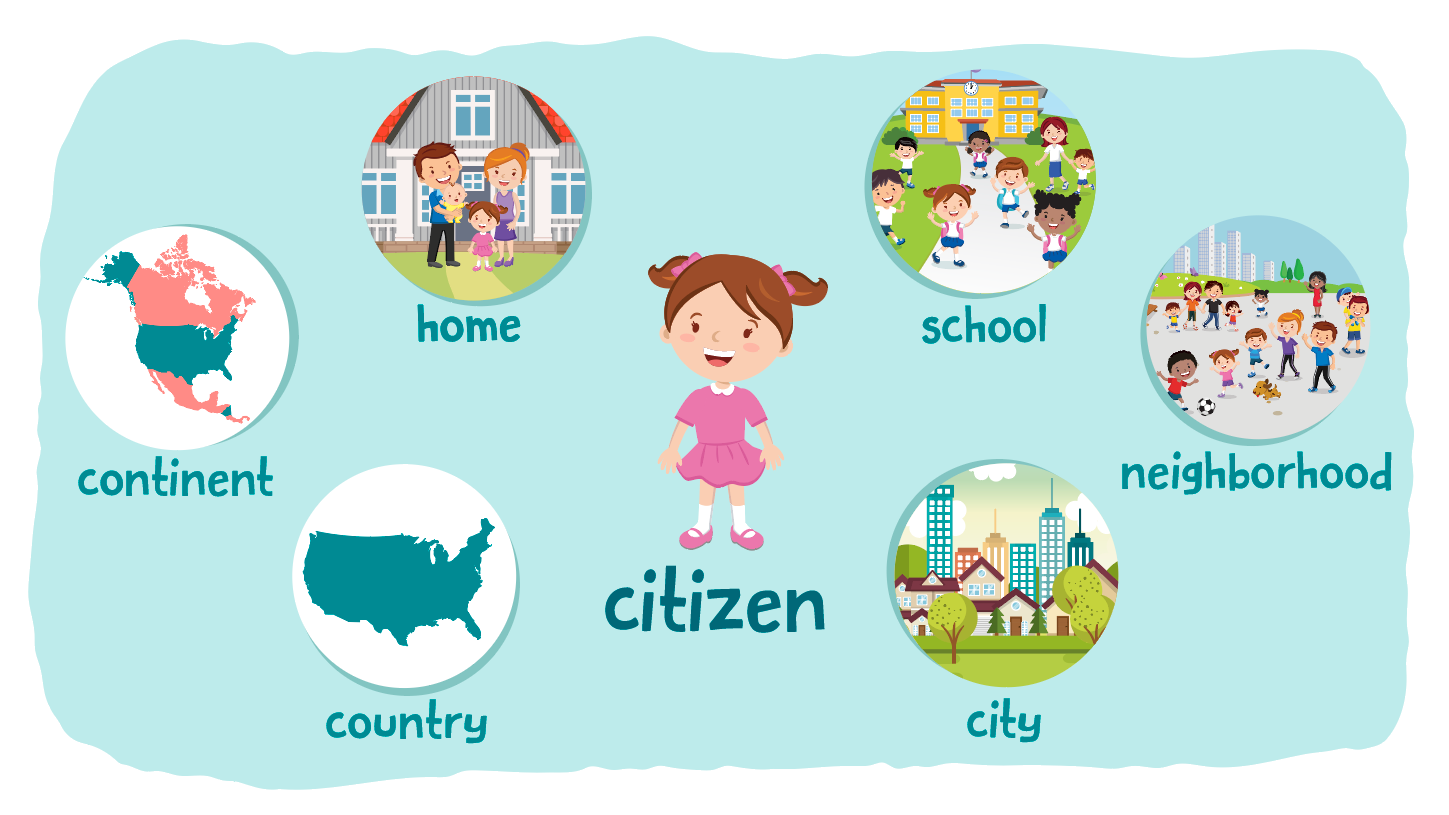Chess Worksheets for Ages 4-6
86 filtered results
-
From - To
Discover our engaging Chess Worksheets designed specifically for children ages 4-6! Perfect for introducing young learners to the fascinating world of chess, these worksheets provide a fun way to build foundational skills in critical thinking, strategy, and problem-solving. Each activity is tailored to be age-appropriate, featuring colorful illustrations and interactive elements to capture children's attention. As they work through puzzles, matching games, and simple chess strategies, kids will develop an appreciation for this timeless game while enhancing their cognitive skills. Start their chess journey today with our printable worksheets and watch them enjoy learning in an inspiring and playful way!
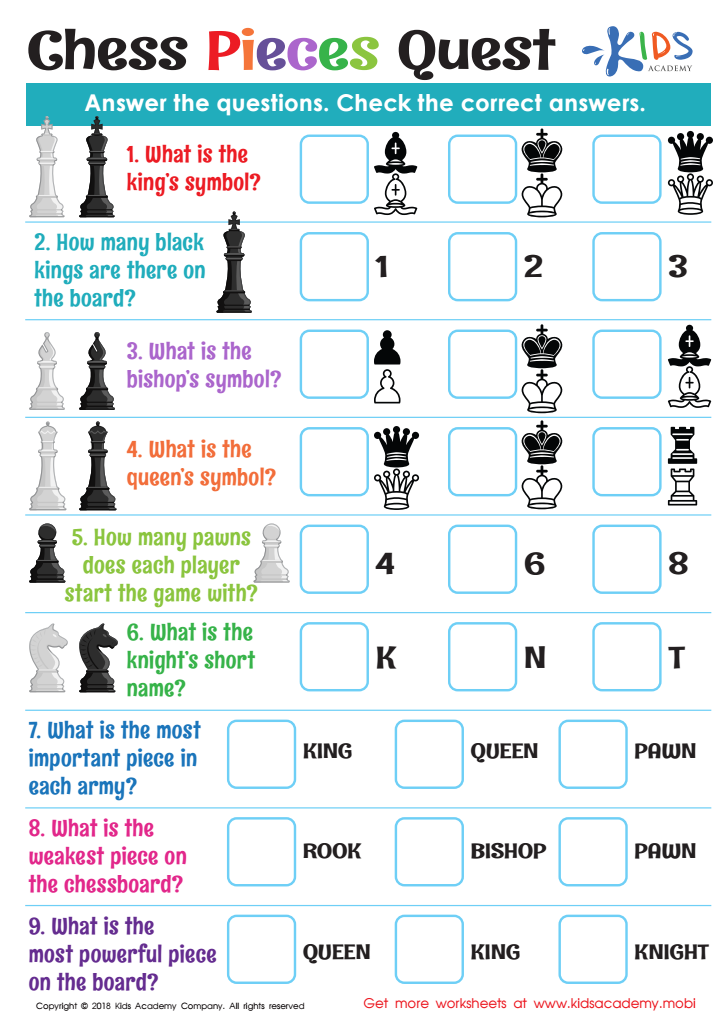

Chess Pieces Quest Worksheet


Notation of Moves Writing it Down Worksheet
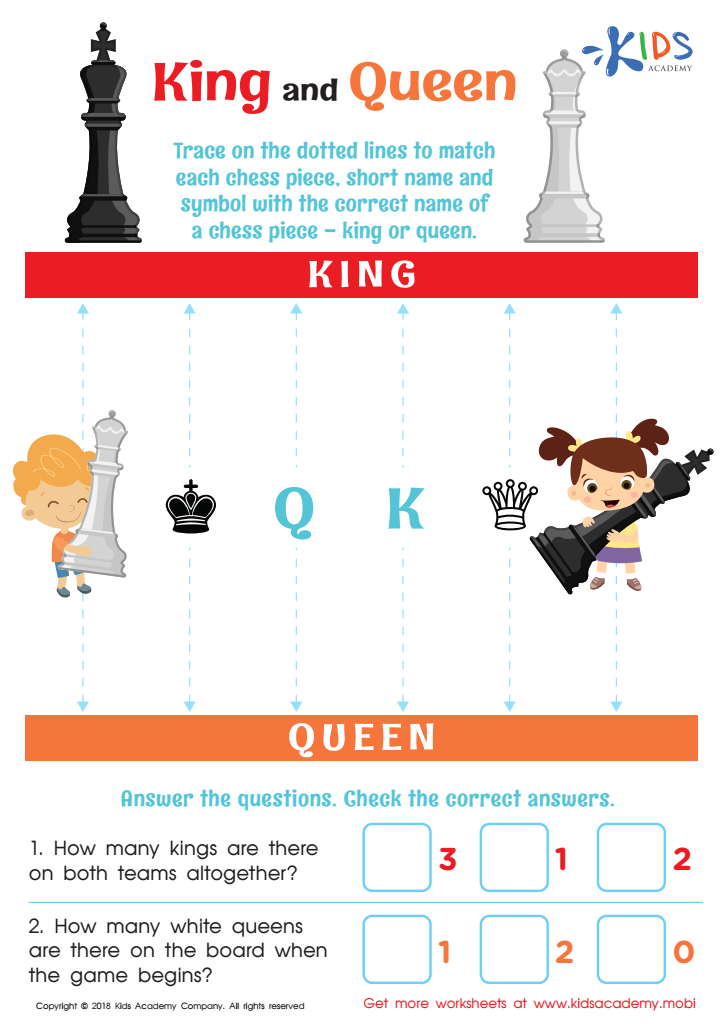

King and Queen Worksheet
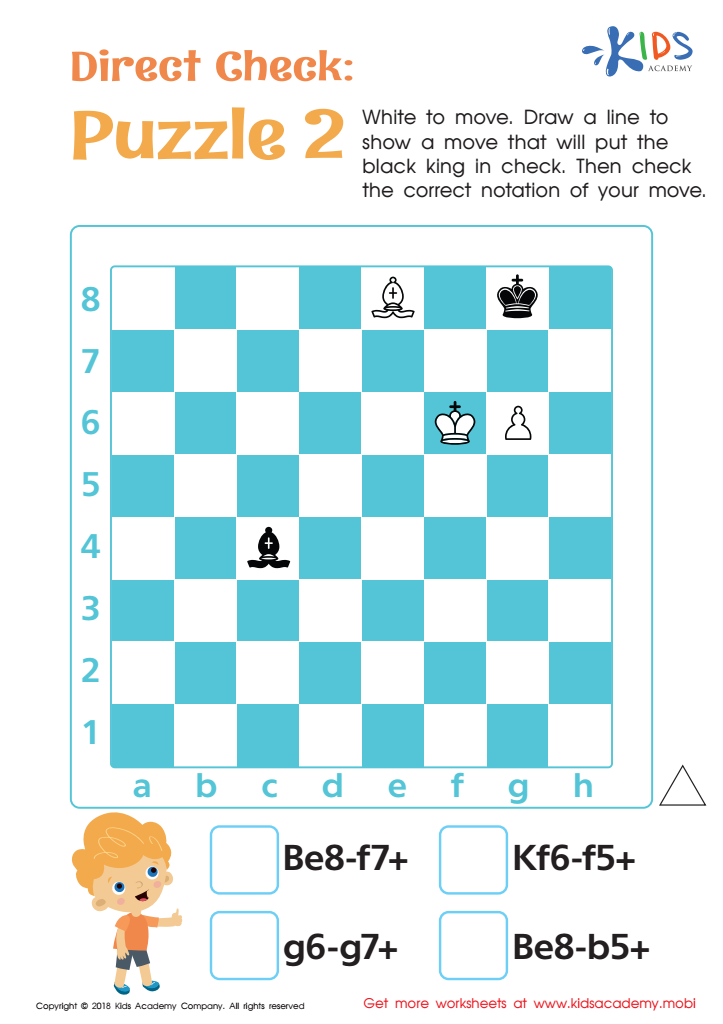

Direct Check: Puzzle 2 Worksheet
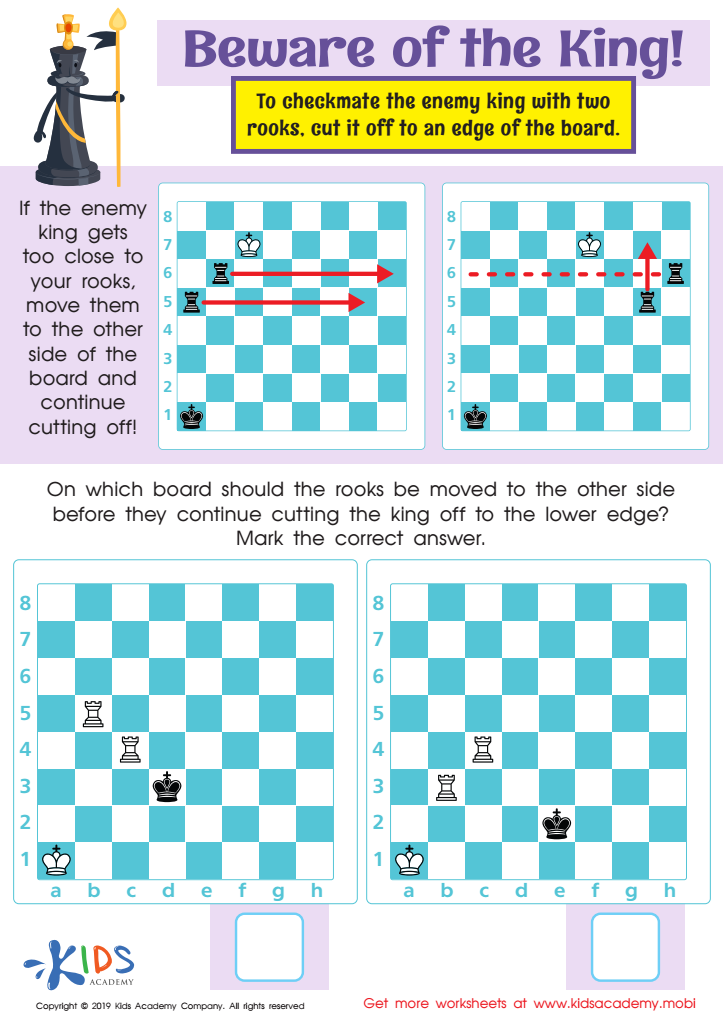

Beware of the King! Worksheet
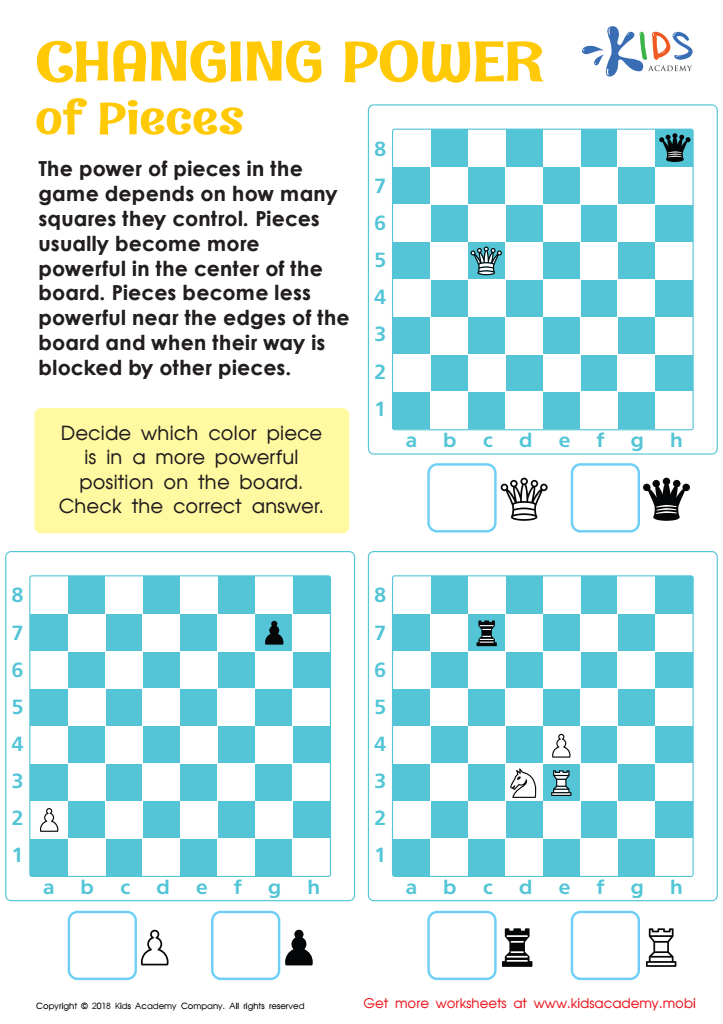

Changing Power of Chess Pieces Worksheet
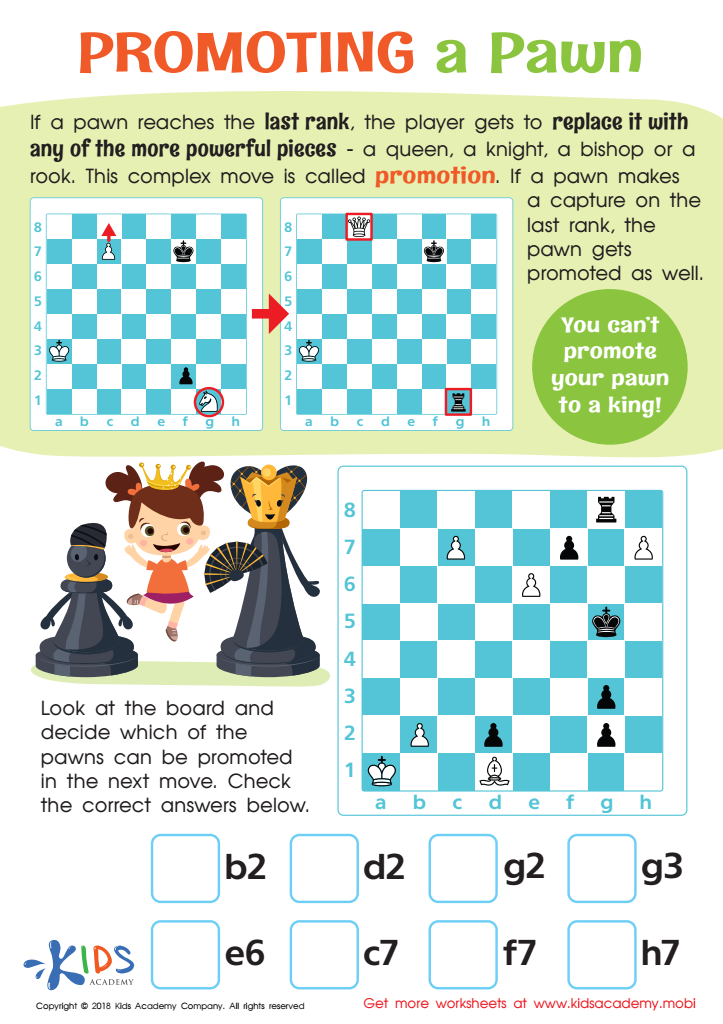

Promoting a Pawn Worksheet
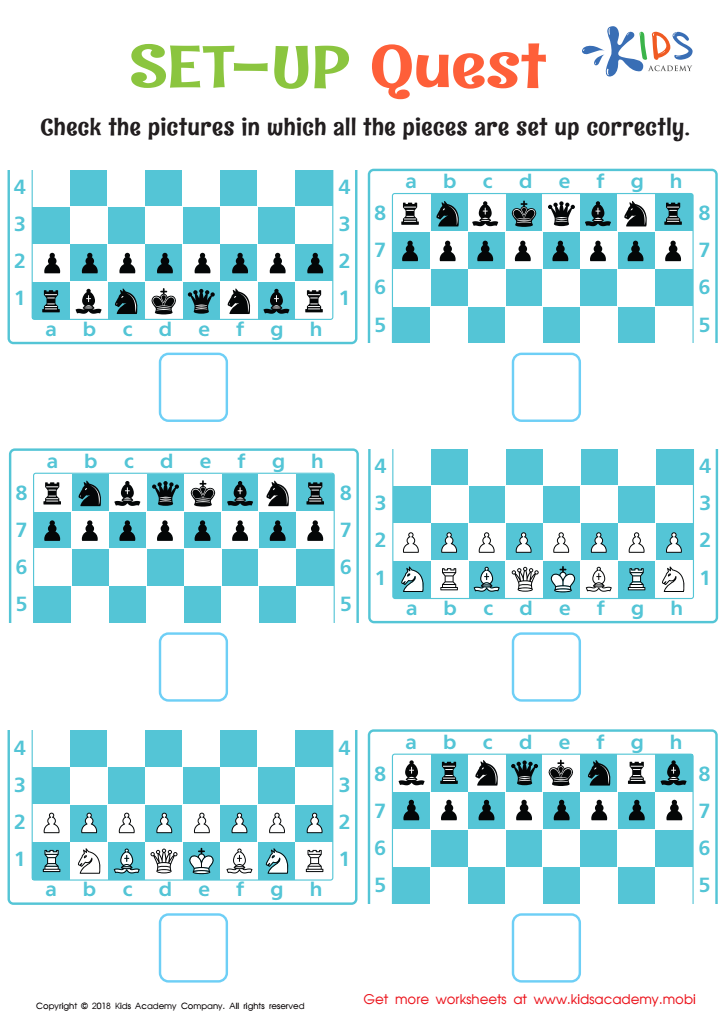

Set-up Quest Worksheet
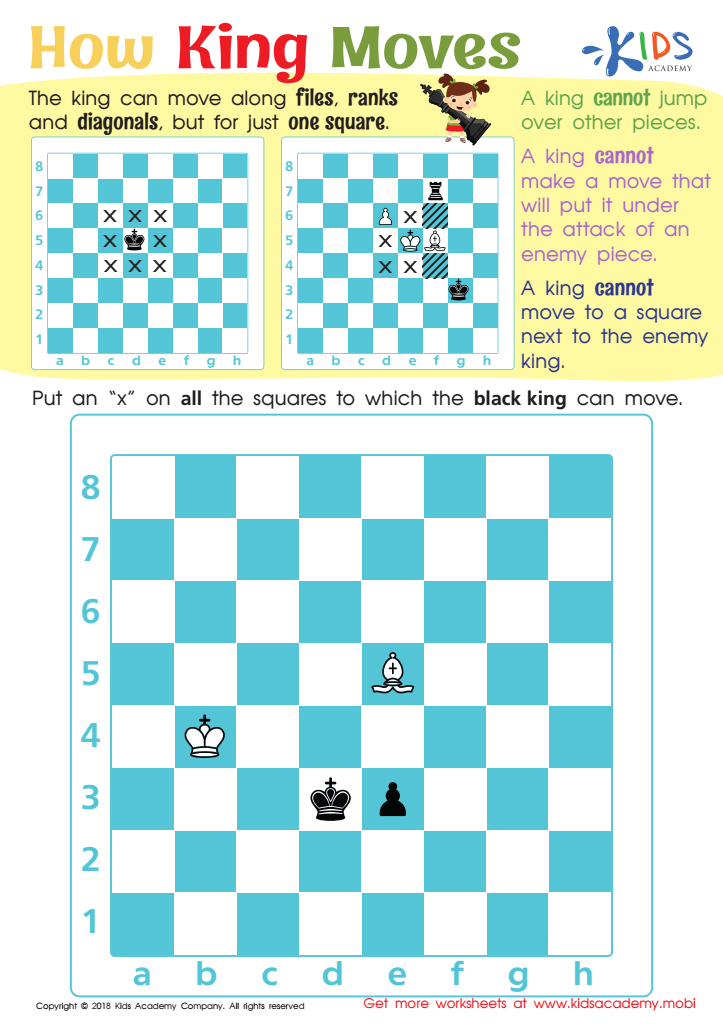

How King Moves Worksheet
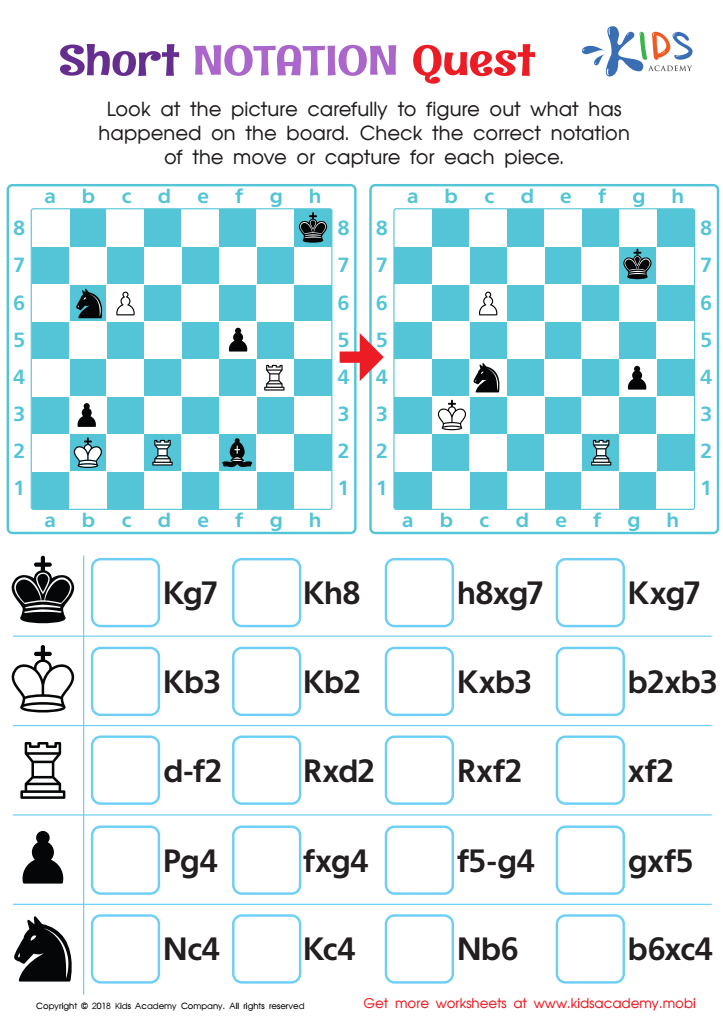

Short Notation Quest Worksheet
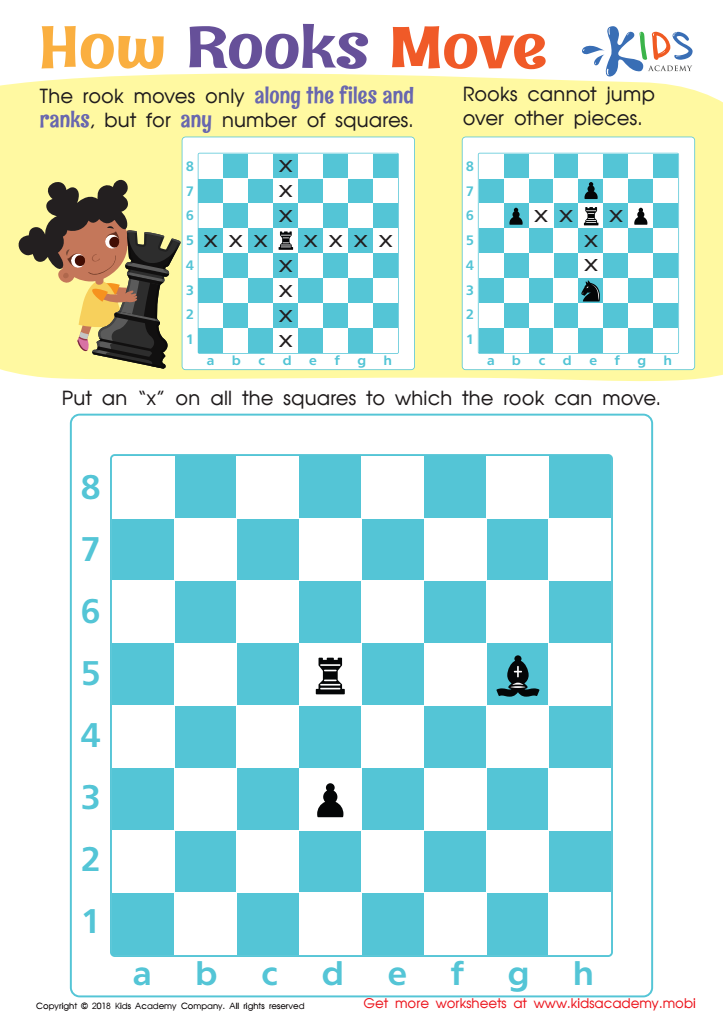

How Rooks Move Worksheet
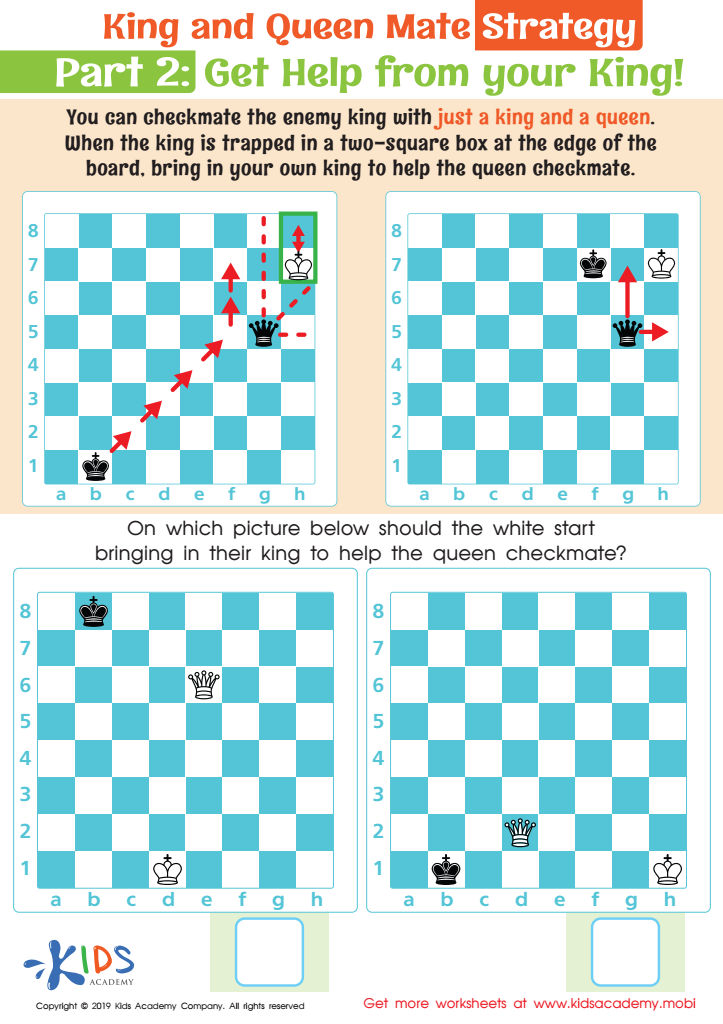

King and Queen Mate Strategy: Part 2 Worksheet
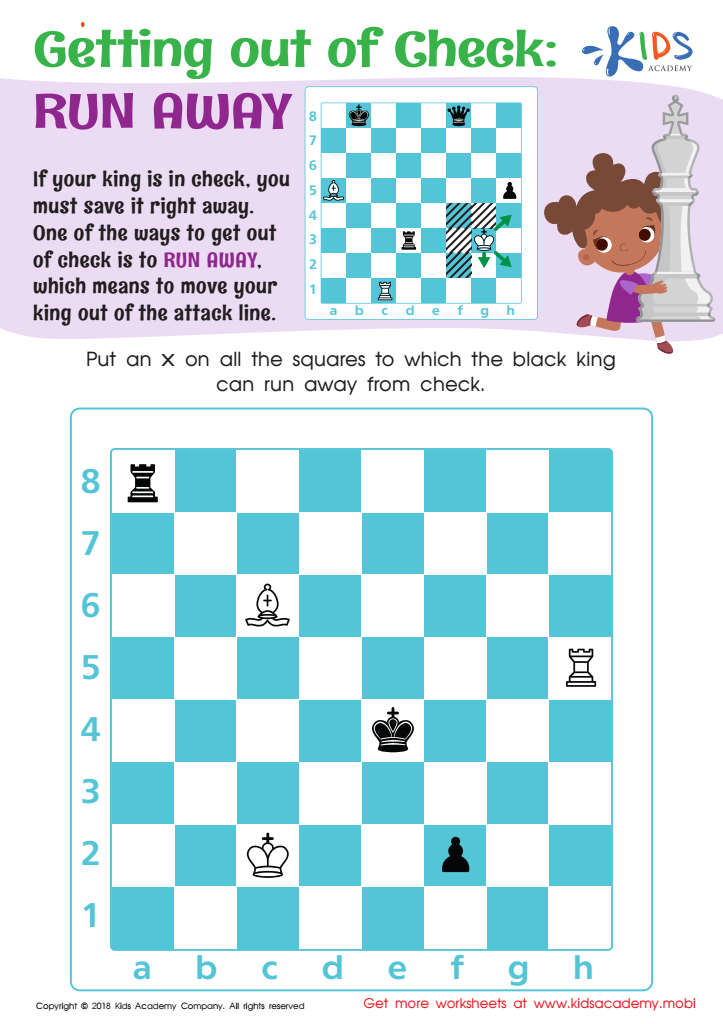

Getting out of Check: Run Away Worksheet
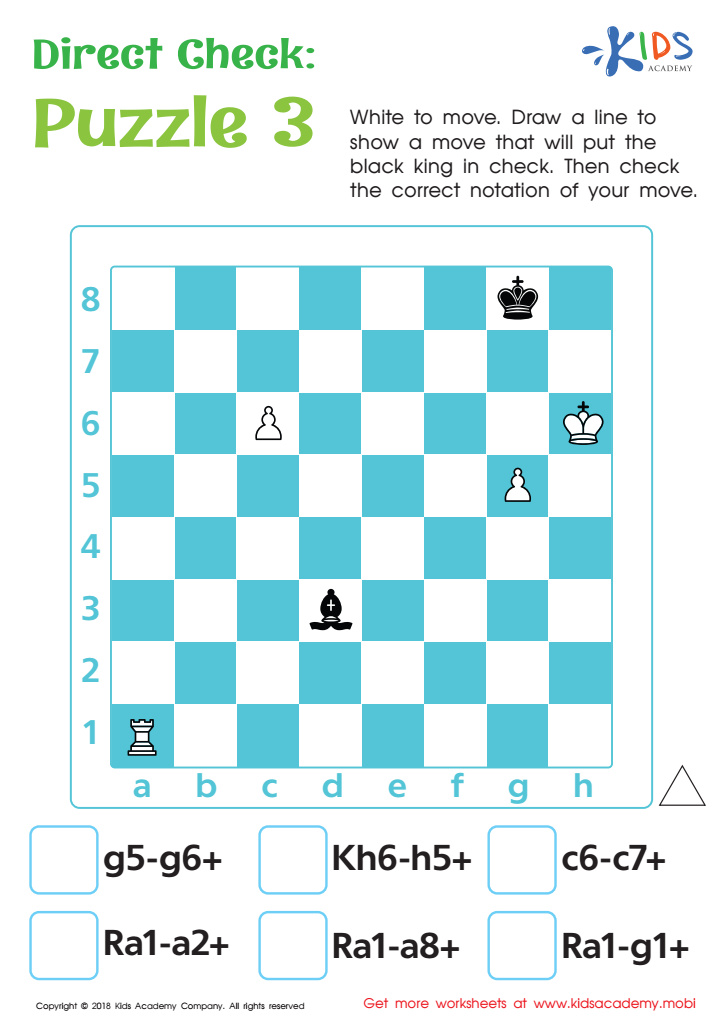

Direct Check: Puzzle 3 Worksheet
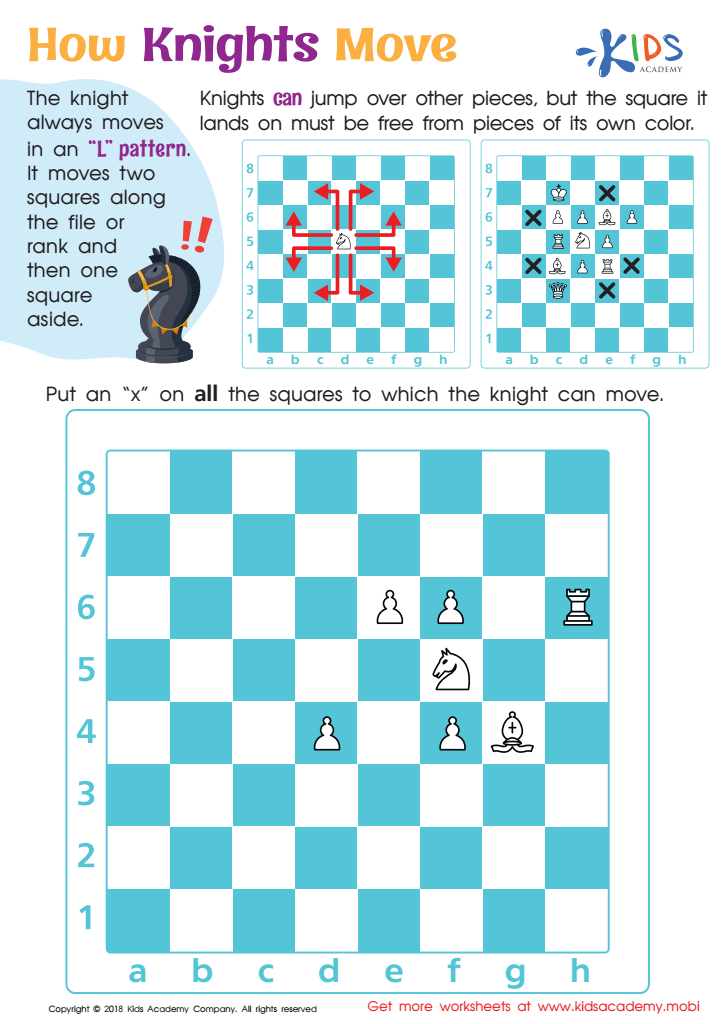

How Knights Move Worksheet
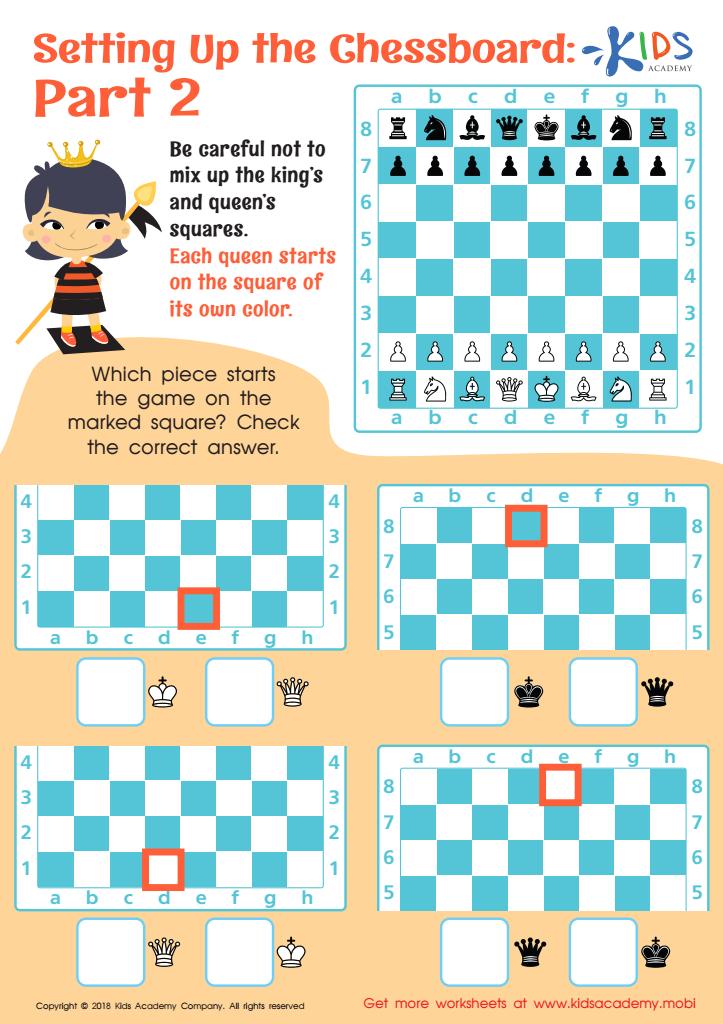

Setting up the Chessboard: Part 2 Worksheet
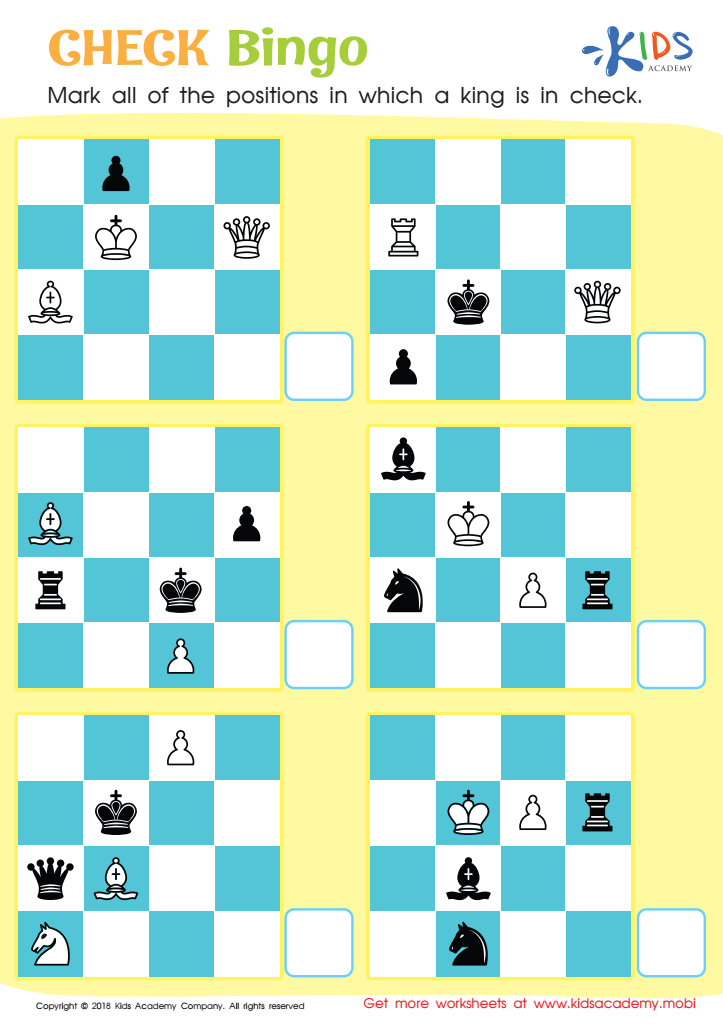

Check Bingo Worksheet
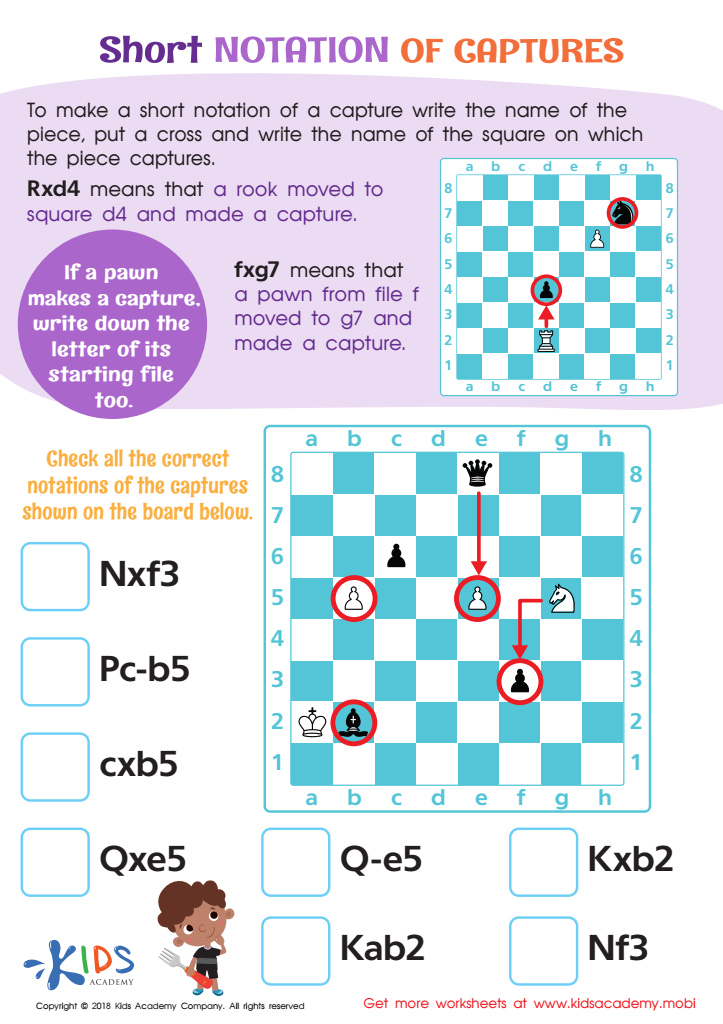

Short Notation of Captures Worksheet
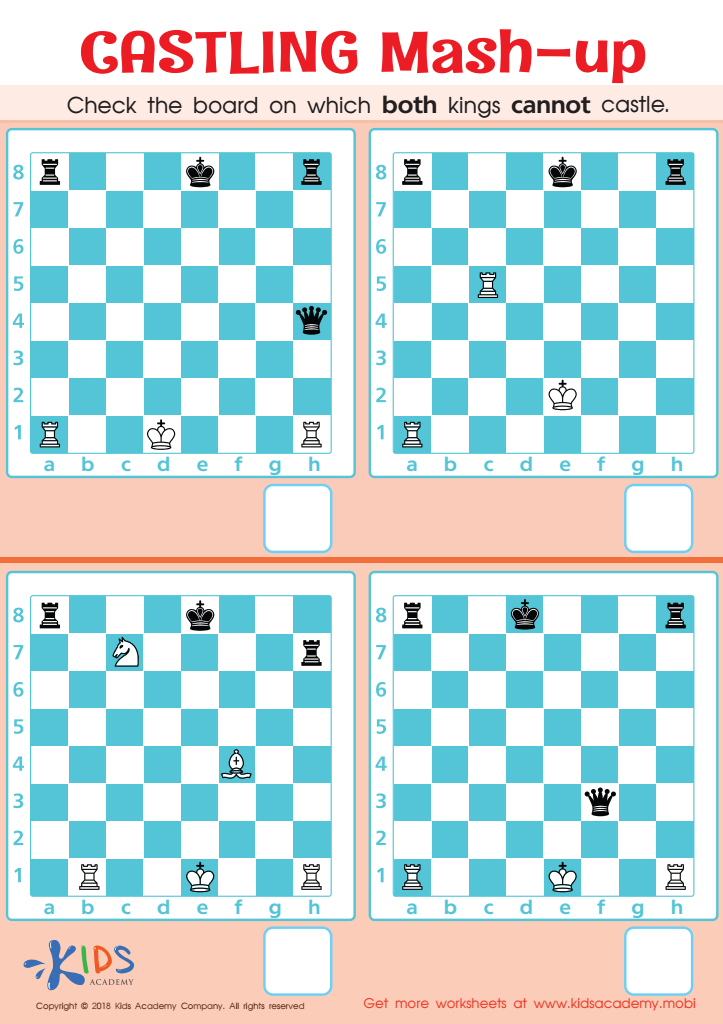

Castling Mash–up Worksheet
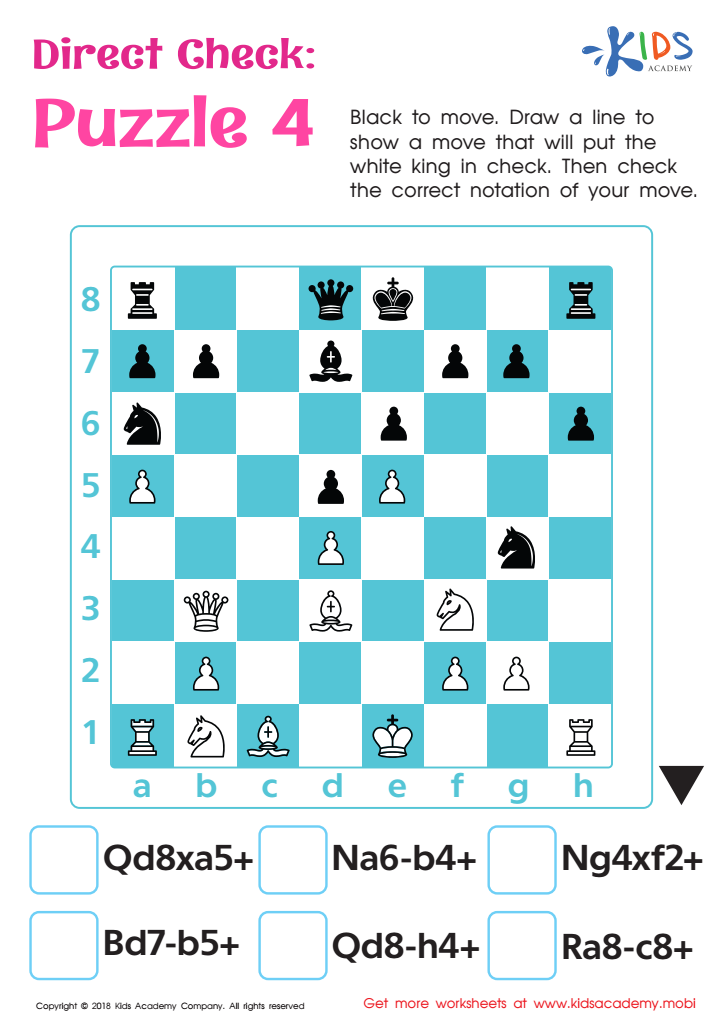

Direct Check: Puzzle 4 Worksheet


King and Queen Mate Strategy: Part 1 Worksheet
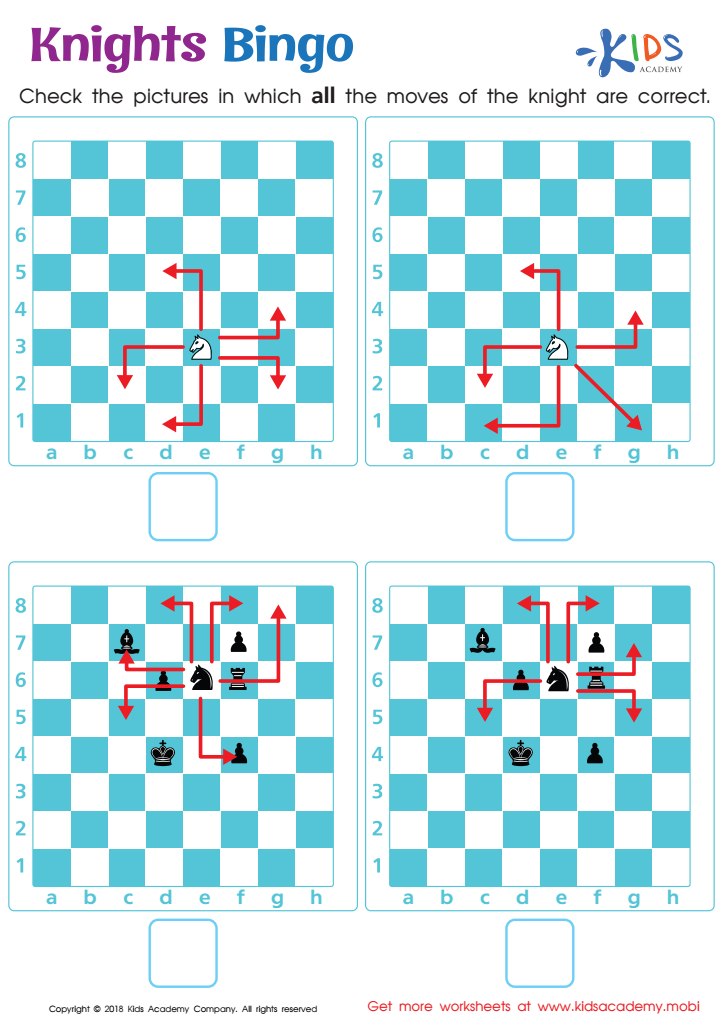

Knights Bingo Worksheet
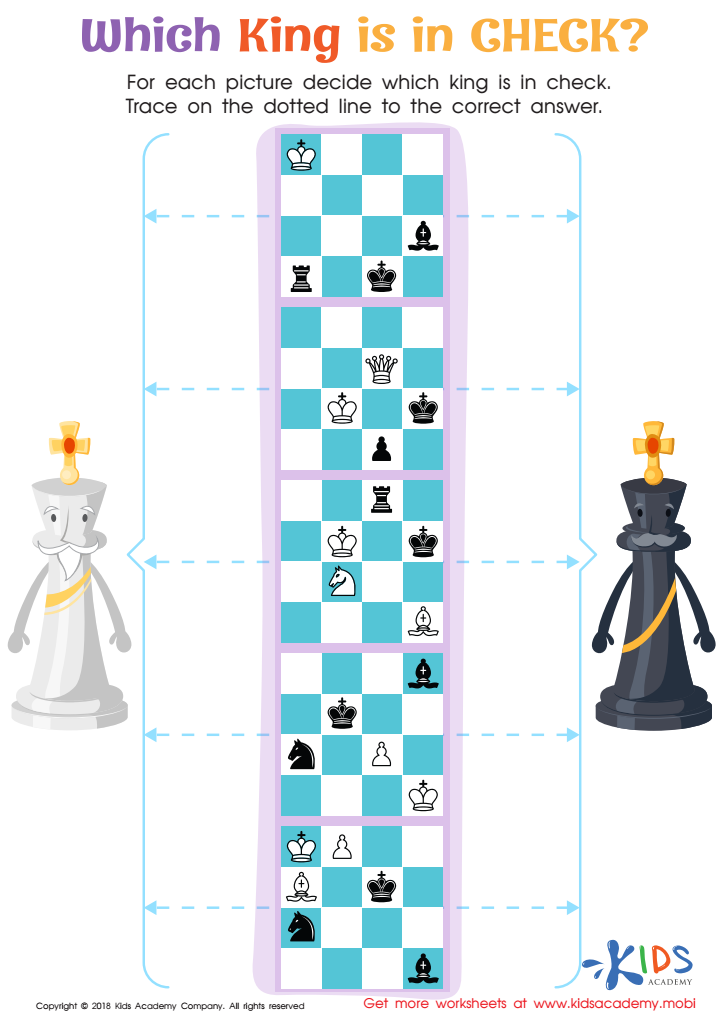

Which King is in Check? Worksheet
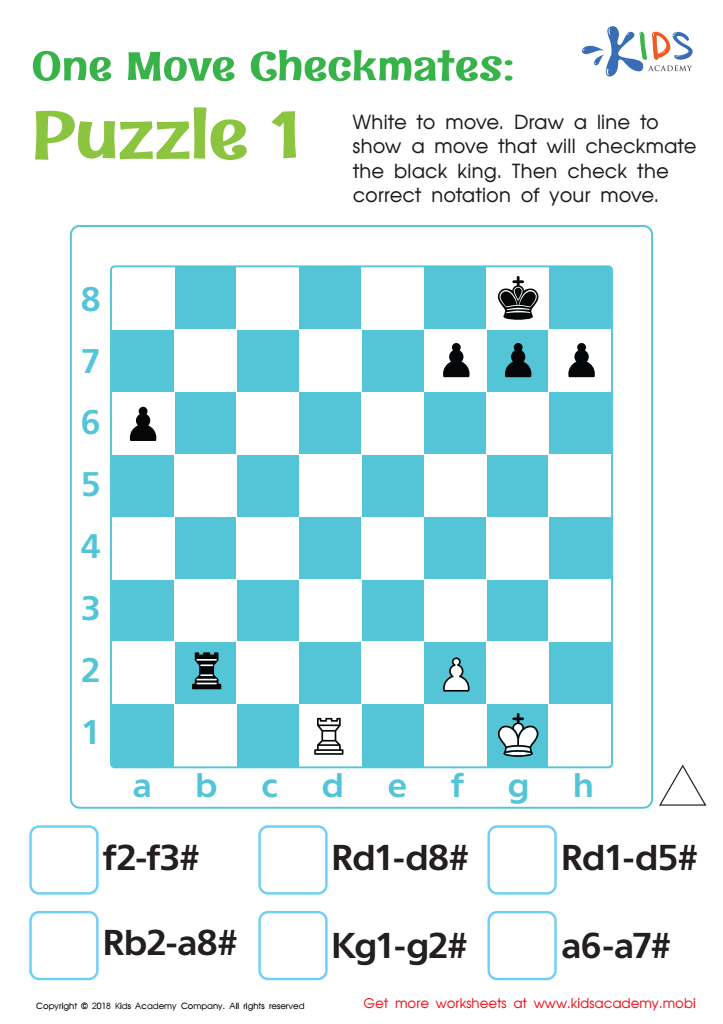

One Move Checkmates: Puzzle 1 Worksheet
Chess is an invaluable tool for children aged 4-6, offering numerous cognitive and social benefits crucial for their development. Engaging in chess helps young learners enhance problem-solving abilities, critical thinking, and strategic planning. While seemingly a simple game, chess promotes pattern recognition and decision-making skills, as children must evaluate their options and predict outcomes based on their moves.
Moreover, chess equips young players with patience and the ability to focus, crucial traits in an age marked by numerous distractions. Through the game, children learn to think ahead and weigh consequences, fostering emotional intelligence as they experience both winning and losing. This early exposure to competition in a controlled environment teaches resilience and sportsmanship—skills that translate into various aspects of life.
Furthermore, chess offers social opportunities as children learn to play in groups, cultivating teamwork and communication skills. As they engage with peers, they develop a sense of community and friendship.
Introducing chess in early childhood lays a strong foundation for lifelong learning and social interaction. For parents and teachers, encouraging this game means investing in a child's cognitive growth, emotional well-being, and interpersonal skills, all of which are essential for thriving in today’s complex world.
 Assign to My Students
Assign to My Students


